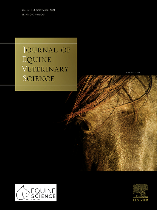Document type : Scientific journal published in the Journal of Equine Veterinary Science
Authors: Rodrigo Arruda de Oliveira, Christine Aurich
Preview: Risk prevention is often counterproductive to stallions' living conditions when assessed under welfare aspects. In the wild, stallions live in social groups, but under domestic conditions, the majority of breeding stallions live in individual boxes with limited social contact. This stimulates aggressiveness and the incidence of stereotypic behavior. While racehorse stallions start their breeding career after having finished their performance career, riding horse stallions are often simultaneously used for breeding and performance. Training, performance, and the associated stress are unlikely to impair semen characteristics, but performing stallions may benefit from more opportunities for social contact. With regard to accommodation of stallions in single boxes, changes in the construction of the partition between them may help to improve social contact from merely visual to much more physical. This will help to reduce social isolation but requires careful observation if neighbors tend to either sympathize or fight with each other. Careful organization of the barn is thus of great importance. Under certain conditions, even keeping adult stallions in groups on spacious pastures is possible. Interestingly, the frequency of agonistic interactions usually decreases quickly and remains low after successful group integration. General changes in the husbandry of young stallions and at their transfer into the future career may help to produce stallions with better social skills and facilitate accommodation under improved welfare conditions.




